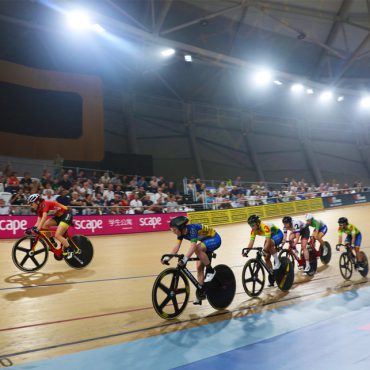
Sound and Light Entertaiment Track Competition
“Six Day”

Cyclist Ayaka, who resides in Brisbane, along with her partner Yoshi, will report on the Brisbane Cycling Festival from a local cyclist’s perspective in two parts. In the second part, we will provide a report on the main event, the “Tour de Brisbane.”
*Part 1 is here
Table of Contents
1. What is the Tour de Brisbane?
2. Start and Finish at the Expo Venue
3. Like Virtual Reality! Racing Through the Heart of the City
4. The Story Bridge and Highway with a View of the City
5. Aid stations that are truly satisfying in their simplicity.
6. In the “Sunshine State”
7. The Evolving Cycling City of Brisbane

During the Brisbane Cycling Festival, among numerous events including the National Track Championships, National Road Race, and family rides, the highlight is the “Tour de Brisbane.”
The event offers three course options: 50km, 80km, and 110km.
All of these are fan ride events open to the general public. Additionally, the 110km course (with a total elevation gain of about 1,200m) includes a race segment that also serves as a qualification event for the UCI Gran Fondo World Series.
What makes the Tour de Brisbane remarkable is that it features a route connecting the city center with the surrounding mountainous areas, creating a “fully closed urban ride event” from start to finish.
This premium ride event fully closes off Brisbane’s office buildings, bus lanes, highways, and even the iconic Story Bridge exclusively for the event.
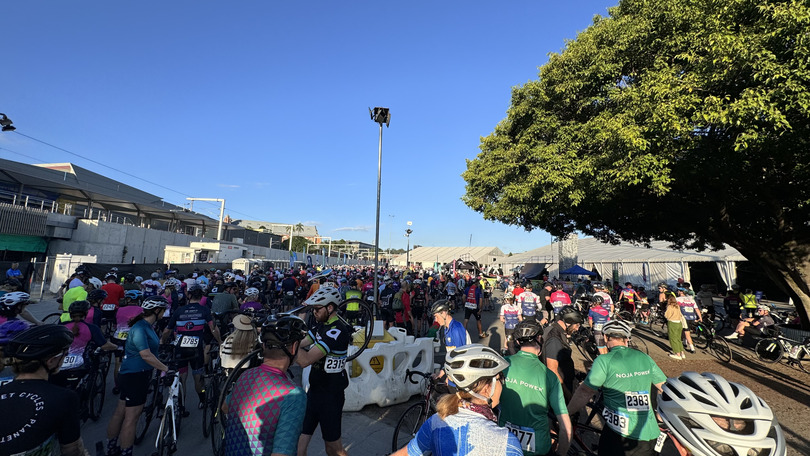
All courses start and finish at the Brisbane Showgrounds, which is also the location of the Cycle Expo.
The 110km course, which includes the popular hill climb spot Mt. Coo-tha towards the end of the 80km course, saw participants starting as early as 6 a.m.
The 80km course (with a total elevation gain of about 640m) participants, including us, are mostly recreational riders, giving the event a relaxed atmosphere overall. Among the crowd, you can see people taking selfies, families coming to see them off, and others relaxing with coffee right up until the last moment before the start.
The wide age range of participants, from teenagers to those in their 70s, reflects the diversity of Australia’s cycling community as a whole.
As the sun rose and it became quite bright, we started our wave start at 7:15 a.m. from in front of the expo venue.

In car-centric Australia, bus lanes are set up separately from general traffic lanes and are extensively used in this event. Riders glide smoothly over the wide, well-maintained asphalt that is typically used by buses.
On the bus lanes, we speed through Brisbane’s city center, passing through Roma Street Parklands and the Queen Street underground bus terminal.
It’s a surreal experience to be riding on roads that were just yesterday used by commuting buses.
After passing through the bus terminal and emerging onto the city’s business district, we continue through the heart of the Central Business District (CBD), cutting through the wind as we ride past office buildings, banks, and government buildings.
On this day, there were over 7,000 participants across all courses.
The diversity of cyclists, with different races and nationalities, is a reflection of Australia’s immigrant culture. The sight of such a wide variety of cyclists streaming through the heart of Brisbane is truly impressive.
It’s akin to closing down Marunouchi in Tokyo for a citizen ride event and having cyclists from all over the world gather and ride through.
Even for those of us participating, there was a surreal, almost futuristic feeling, as if we were experiencing something like virtual reality.

The Story Bridge, built in 1940, is a symbolic structure among Brisbane’s many bridges. It is Australia’s largest steel cantilever bridge, with over 90,000 vehicles crossing it daily.The bridge features walkways on both sides where bicycles can also ride, but on this day, it is exclusively reserved for cyclists.
From the bridge’s midpoint, 74 meters above the ground, you can enjoy panoramic views of the city across the Brisbane River. We savor every pedal stroke of this special 1,072-meter-long stretch just for the event.

The highlights of the ride are not limited to the CBD and Story Bridge. The Inner City Bypass (ICB), which appears in the middle of the course, is also a thrilling section.
The ICB is a major highway-standard bypass spanning 5.6 km in Brisbane. Of course, this stretch is also exclusively reserved for the event.
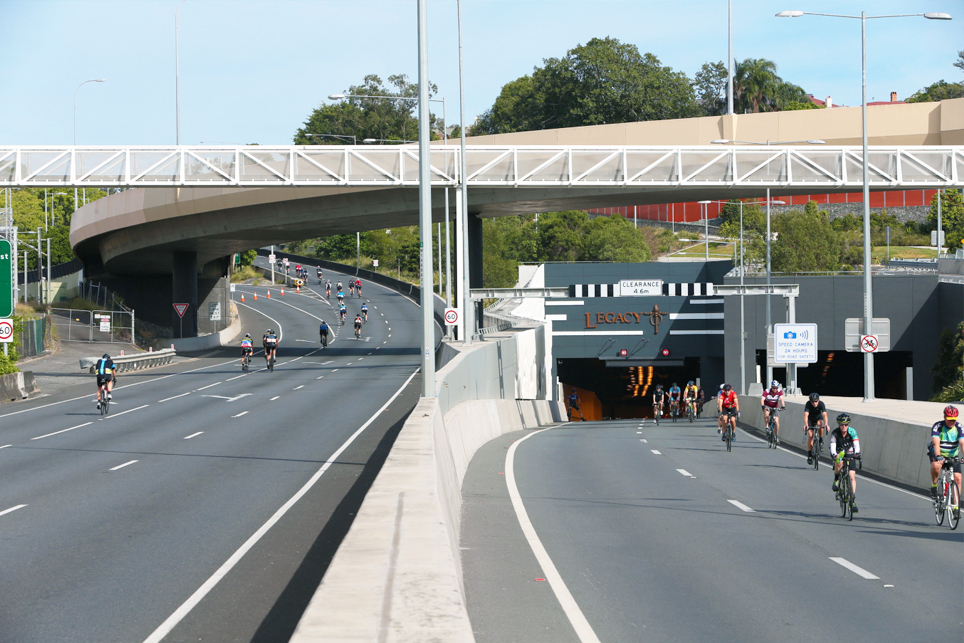
We enter the Legacy Way Tunnel from the ICB and proceed eastward.
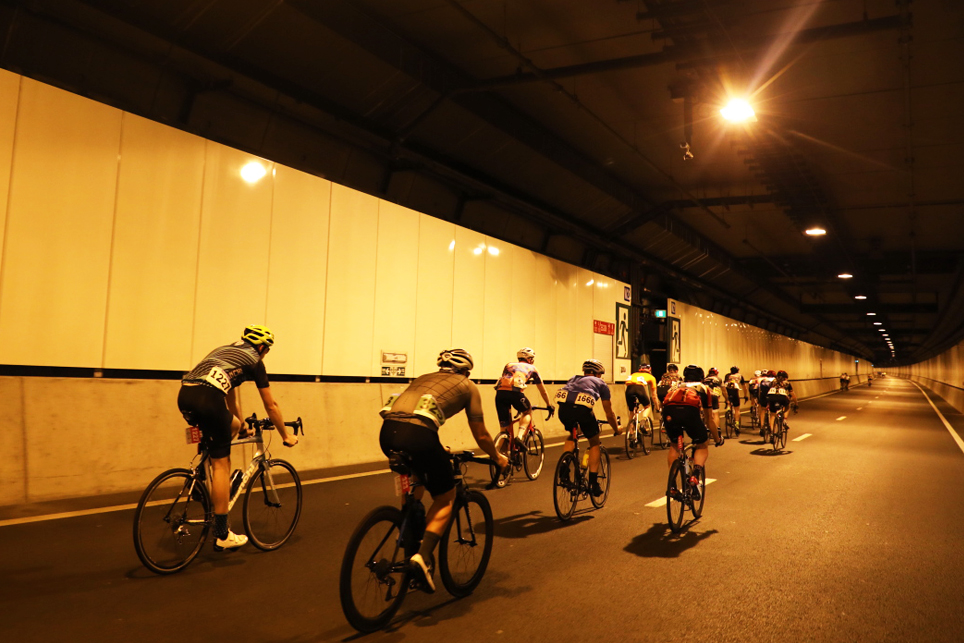
Of course, bicycles are not normally allowed here. Illuminated by orange lights and surrounded by warm air, the only sounds are the soft clicking of ratchets, enhancing the extraordinary sense.
As we emerge from the tunnel, we continue along the highway, heading towards the turnaround point of the course.
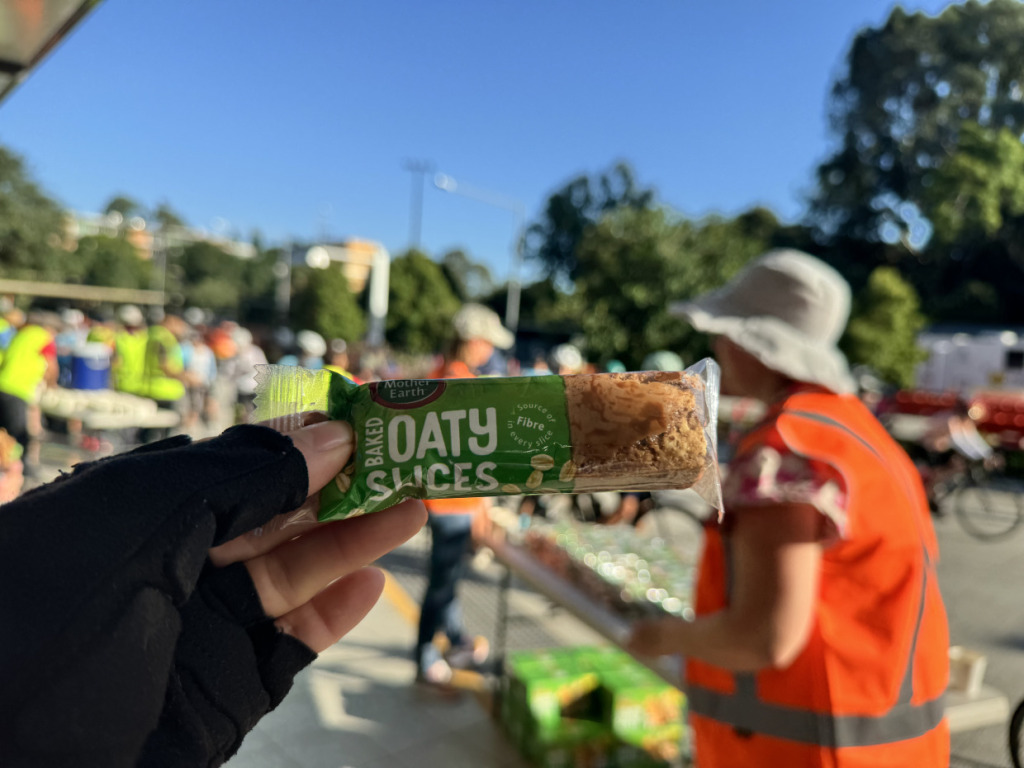
By the way, in Australian cycling events, “aid stations” are often referred to as “rest stops” or “feed stations.”
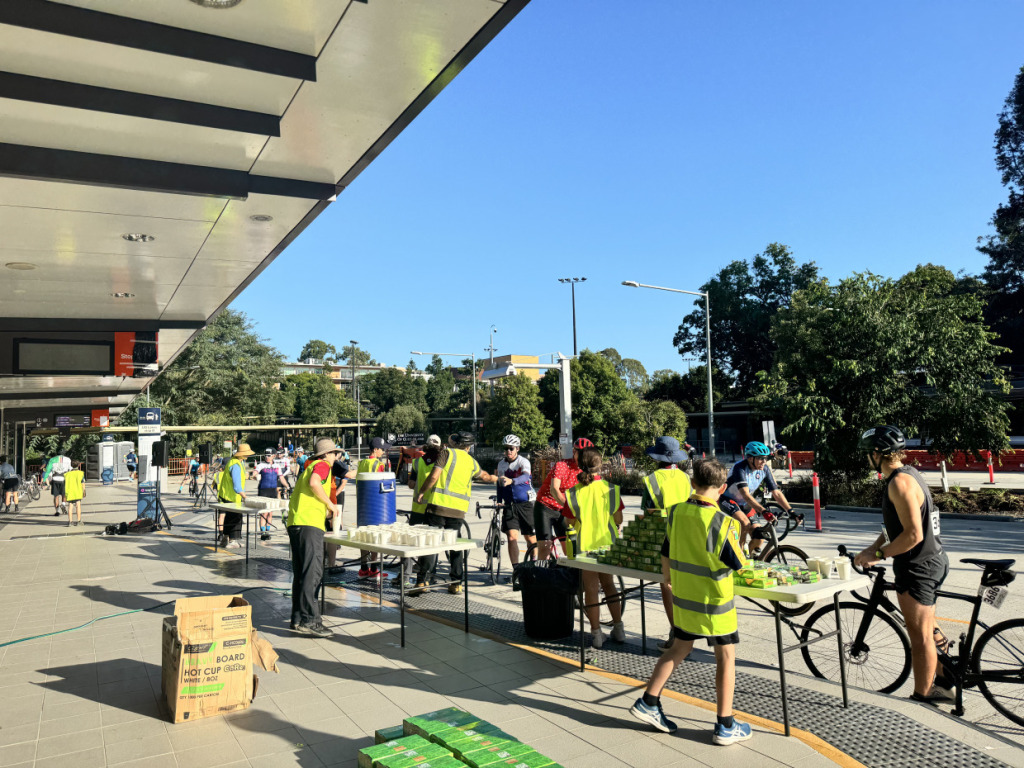
In Japan, aid stations at cycling events are often associated with local volunteers serving regional dishes and B-grade gourmet foods.
However, aid stations in Australia are quite simple.
They typically offer fruits like bananas and apples, bite-sized pastries or muffins, and energy gels—essentially just “refueling” food.
If you’ve participated in events in Japan, you might initially find this simplicity a bit lacking. When I first participated in a local Australian event about seven years ago, I was honestly surprised by how minimal it was.
This simplicity might be related to the fact that the primary goal of Australian cycling events is often “promoting public health” rather than “boosting regional tourism” or “local revitalization,” or focusing the entry fees on charities or medical research organizations.

Rather than looking forward to gourmet food at the aid stations, the simplicity of purely enjoying the act of cycling itself is a distinct charm and part of the appeal.
Interacting with local volunteers is also a delightful experience. They hand out water and fruit with friendly smiles. Don’t worry if you’re not confident in your English. A smile and a simple ‘Thanks!’ will convey your gratitude perfectly!
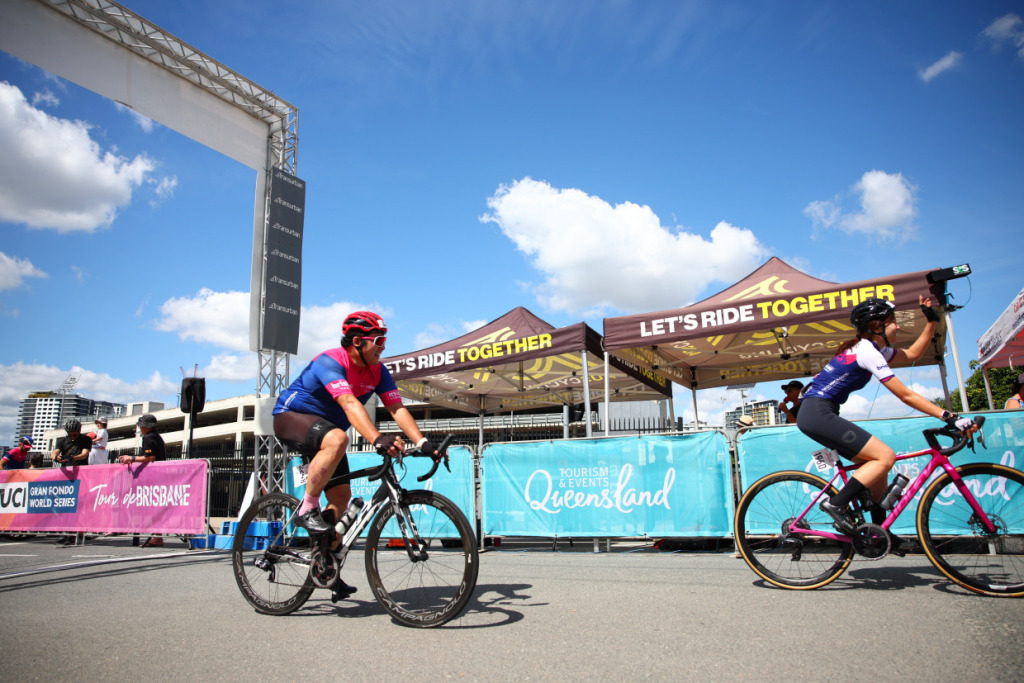
After turning around on the highway and passing through the Legacy Way Tunnel again, you’ll head back towards the city.
Once you’ve refueled at the final aid station at the 65km mark, it’s time for the final sprint.
With the rising temperature, a bit of fatigue begins to set in, but forming a small group of 6 to 8 riders with those traveling at a similar speed helps us push through together.

As we approach the Brisbane Showgrounds, which was the starting point, the finish line is just around the corner.
After starting at 7:15 in the morning and riding for about 3 and a half hours, we crossed the finish line together at 10:45. The area was filled with the smiles of riders finishing their rides, as well as friends and family welcoming them.
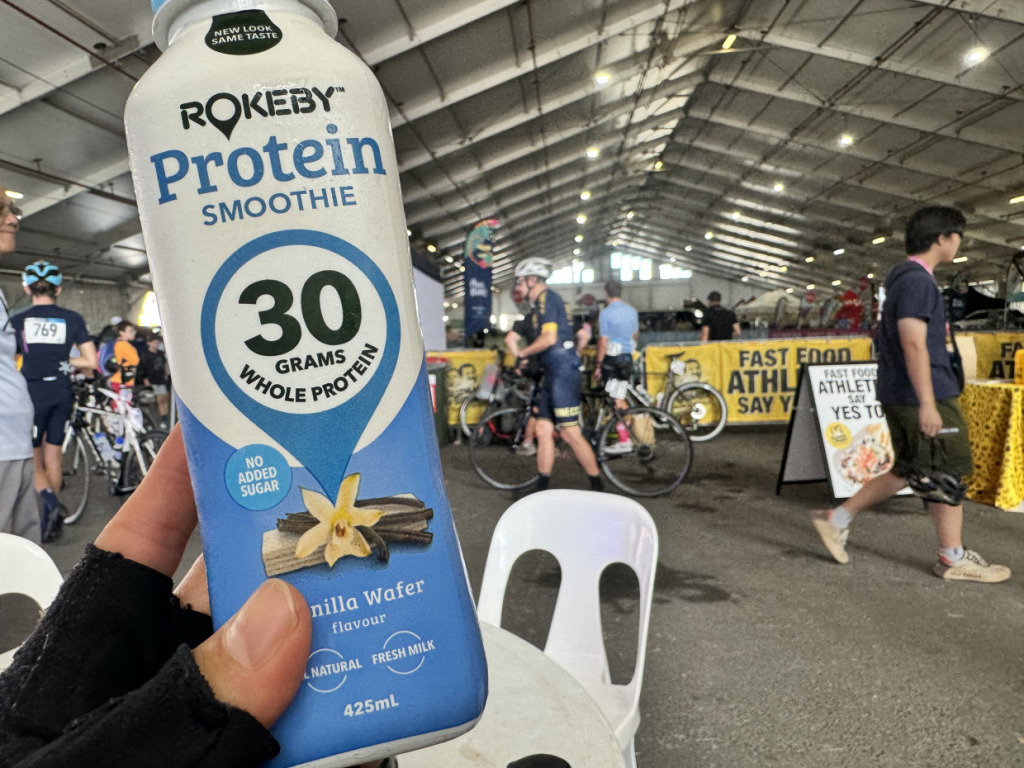
After catching my breath at the finish line, I downed a protein drink provided in the finishing area to refresh my sweat-soaked body.
The clear blue sky and expansive clouds of Queensland, known as the ‘Sunshine State,’ made for perfect cycling weather.
The event, with its complete city-wide closure from start to finish, allowed us to fully enjoy Brisbane in a stress-free and exhilarating experience, leaving me with a great sense of satisfaction.
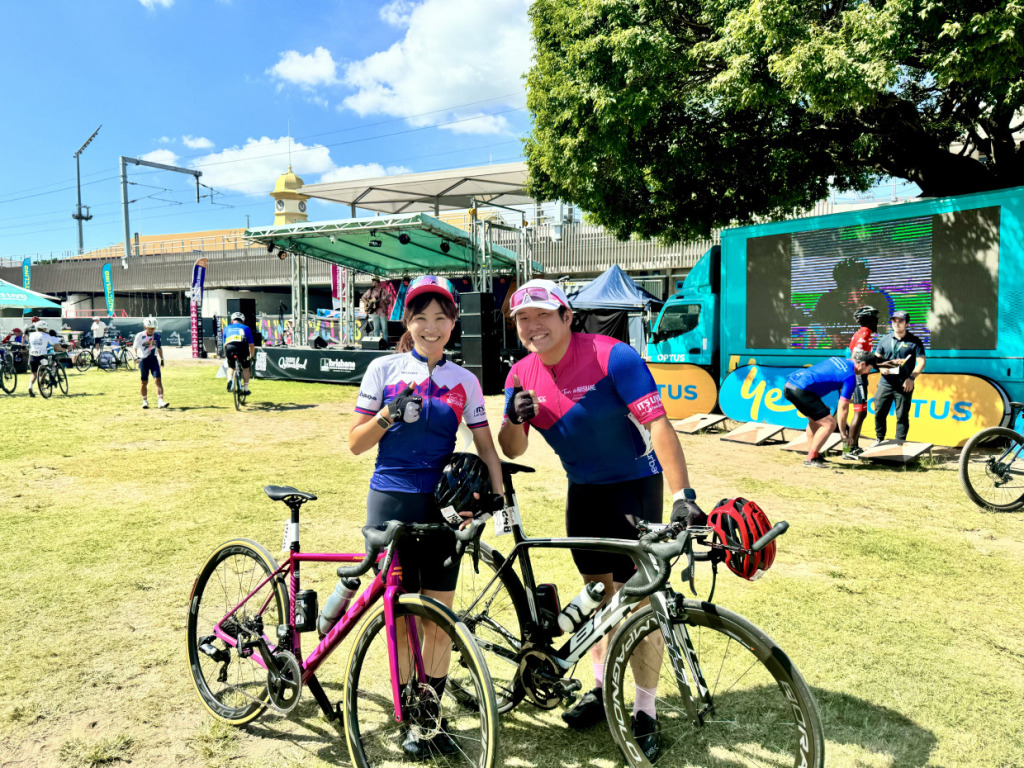
Being able to fully enjoy a ride event like this is thanks to the perfect weather, good health, a reliable bike, and the many staff members who support the event.
The sense that each condition is interconnected and contributes to the experience allows me to truly savor the joy of cycling once again. That’s what I believe is the charm of cycling events in Australia.
For us local cyclists, the Tour de Brisbane was thoroughly enjoyable. For participants coming from Japan, it promises to be an exceptional riding experience that’s distinctly different from a typical sightseeing trip.
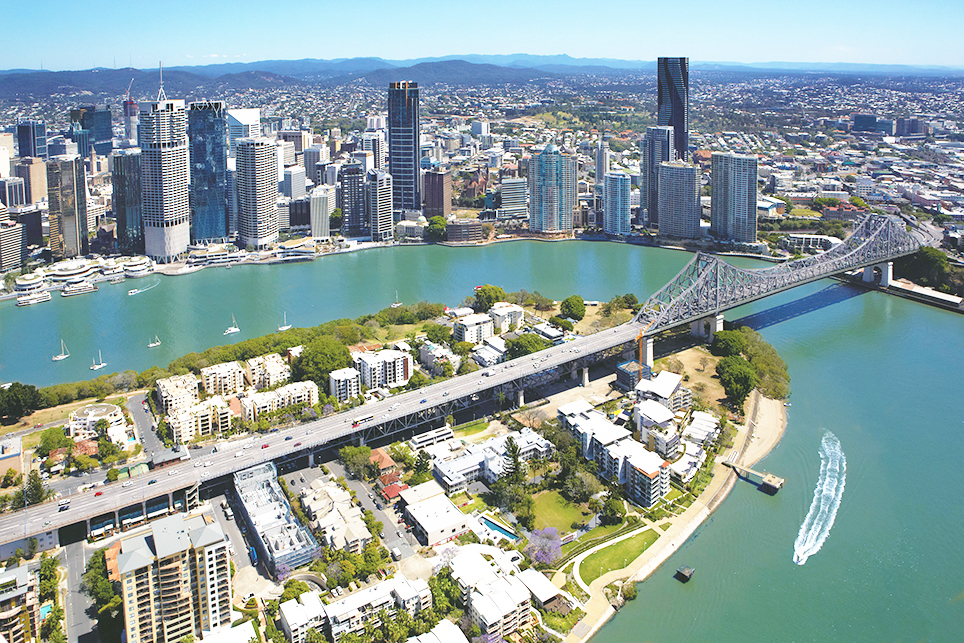
About seven years ago, I worked as an intern with the state government’s tourism department and a bicycle NPO, focusing on promoting cycle tourism in Queensland.
At that time, Queensland still seemed to have a lot of potential compared to other regions.
To think that Brisbane would become a major hub for cycling festivals, hosting an expo at the city’s premier exhibition venue, and holding a ride event that completely closes off the CBD—it seems like a dream come true compared to back then.
This transformation reflects the significant growth in the local cycling community after the pandemic and the strong commitment of the Queensland Government and Brisbane City in preparation for the 2032 Brisbane Summer Olympics and Paralympics.
The Tour de Brisbane 2025 is scheduled to take place on April 13th (Sunday). Why not come and experience the evolving cycling city of Brisbane for yourself?
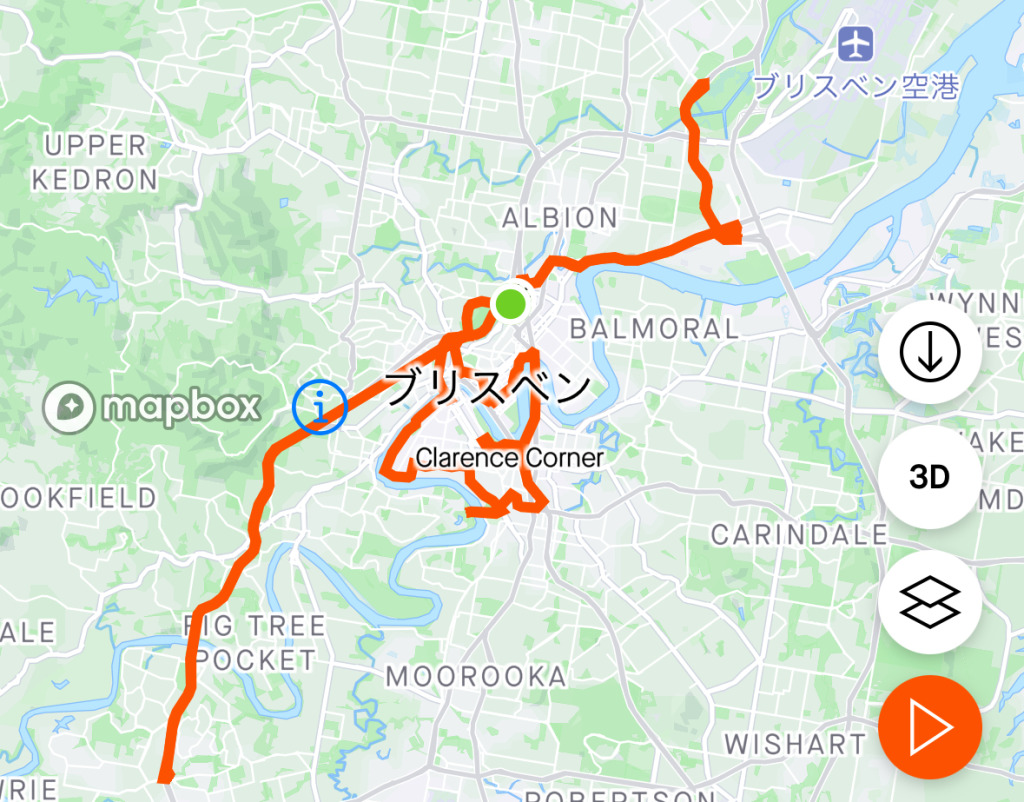
◆Related Pages
Brisbane Cycling Festival Official Website
https://www.brisbanecyclingfestival.com/
Tour de Brisbane Official Website
https://tourdebrisbane.org/
Text_Ayaka
Profile

Ayaka (Editor/Writer)
Residing in Brisbane, Queensland, Australia.
Captivated by cycling journeys in 2011, they have contributed travel reports from around the world to the magazine Cycle Sports. During her study abroad in Australia in 2017, she serialized “G’day, Australia! ~ Bicycle News from Brisbane” on Cycle Sports.jp. After returning to Japan, she worked as an English educational material editor and as an interpreter/MC for a bicycle NPO. She moved to Brisbane in 2022 and is currently sharing the charm of Australian cycling.
X https://twitter.com/aya_p_BNE (aya_p @aya_p_BNE)
Instagram https://www.instagram.com/aya_p_14/
Blog https://gdaybabyccino-ayaka.com/
YouTube Ayaka’s Radio Show from Australia
https://www.youtube.com/@aya_p_BNE
Post Date:2024.09.04